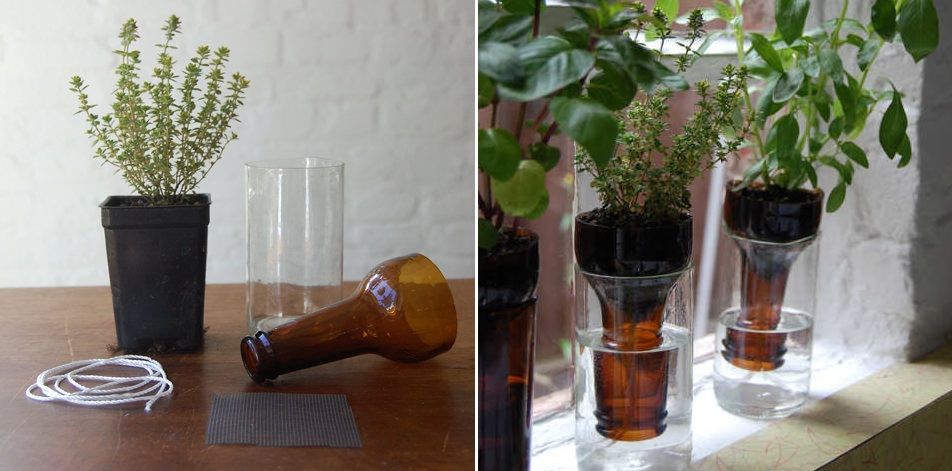Gardening can be a fulfilling hobby, but it can also be time-consuming and challenging, especially when it comes to watering your plants. Many people struggle with maintaining a consistent watering schedule or worry about overwatering or underwatering their plants. Fortunately, self-watering pots offer a solution to this problem. In this article, we will discuss the benefits of self-watering pots, how they work, and factors to consider when choosing one. We will also provide a list of top self-watering pots on the market and tips for using them effectively.
Self watering pots are designed to keep plants hydrated without requiring frequent watering. These pots have a built-in mechanism that draws water from a reservoir and distributes it to the soil as needed. As a result, plants can grow healthier and more robust without the risk of overwatering or underwatering. Self-watering pots come in various sizes and designs, including hanging pots online, making them suitable for any indoor or outdoor space.
How do self-watering pots work?
Self-watering pots have a reservoir at the bottom that holds water. The water is drawn up through a wick or capillary action and distributed to the soil as needed. Some self-watering pots have a water gauge to indicate when the reservoir needs to be refilled. Self-watering pots come in three main types:
Sub-irrigation: In this system, a container with a wick or tube is placed in the pot, and the wick draws water from the container to the soil.
Wicking system: This system uses a wick that extends from the soil into the water reservoir, drawing water up as the soil dries out.
Reservoir system: This system has a water reservoir at the bottom of the pot, with a platform or tray that holds the soil above it. The soil draws water from the reservoir as needed.
Advantages of self-watering pots
Self-watering pots offer several benefits, including:
- Saves time and effort: With self-watering pots, you don’t have to worry about watering your plants every day or risk forgetting to water them. The pots provide consistent hydration, freeing up your time for other gardening tasks.
- Reduces the risk of overwatering or underwatering: Self-watering pots distribute water evenly, preventing overwatering or underwatering that can damage plants.
- Improves plant growth and health: Self-watering pots provide plants with a steady supply of water and nutrients, resulting in healthier and more robust growth.
- Increases the longevity of plants: Self-watering pots help prevent root rot, a common problem that can shorten the lifespan of plants.
Factors to consider when choosing self-watering pots

When choosing self-watering pots, several factors should be considered, including:
Size and capacity: Choose a pot size that fits your plant’s root system and has enough capacity to hold the required amount of water.
Material: Self-watering pots come in various materials, including plastic, ceramic, and terracotta. Choose a material that is durable and suitable for your environment.
Aesthetic appeal: Self-watering pots come in various designs and colors. Choose a pot that complements your decor and adds aesthetic appeal to your space.
Drainage and ventilation: Ensure that the pot has adequate drainage and ventilation to prevent waterlogging and fungal growth.
Price: Self-watering pots range in price, from budget-friendly to high-end. Consider your budget and choose a pot that fits within your price range.
Top self-watering pots on the market
Several self-watering pots are available on the market, each with its own unique features and design. Here are some of the top self-watering pots that you can consider for your indoor or outdoor gardening needs.
Lechuza Self-Watering Planters
Lechuza is a popular brand of self-watering planters that are known for their stylish designs and durability. These pots come with a water reservoir at the bottom that feeds water to the plant roots as needed. They also feature a water level indicator that tells you when it’s time to refill the reservoir.
EarthBox Garden Kit
The EarthBox Garden Kit is a popular self-watering planter that is ideal for growing vegetables and herbs. This kit comes with a sturdy container, a water reservoir, and a planting guide. The EarthBox also has a unique watering system that ensures plants get the right amount of water without over-watering.
Glowpear Self-Watering Planters
The Glowpear Self-Watering Planters are designed for both indoor and outdoor use. These pots come with a unique water-wicking system that draws water up from the reservoir to the plant roots. They also feature a water-level indicator and are made of high-quality, UV-resistant materials.
Mkono Self-Watering Hanging Planters
If you’re looking for self-watering hanging pots, the Mkono Self-Watering Hanging Planters are a great option. These pots come with a water reservoir at the bottom and a cotton rope that draws water up to the plant roots. They are perfect for small indoor plants and herbs.
Santino Self-Watering Planter
The Santino Self-Watering Planter is a sleek and modern self-watering pot that is perfect for indoor plants. It comes with a water reservoir and a drainage system that prevents over-watering. The pot is also made of high-quality, shatterproof plastic that is designed to last.
Conclusion
Self-watering pots are a great investment for any gardener who wants to simplify their gardening routine and ensure their plants stay healthy and hydrated. With a wide range of options available on the market, you’re sure to find a self-watering pot that meets your gardening needs and fits your style. Whether you choose a hanging pot or a traditional planter, your plants will thank you for the extra TLC.




